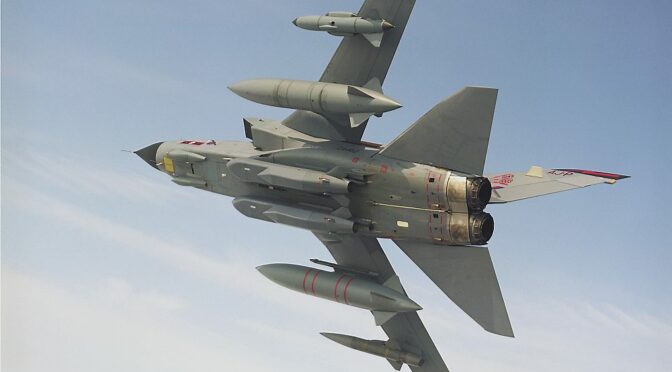Article published in The Daily Telegraph, 14 September 2023. © Richard Kemp
British-supplied Storm Shadow cruise missiles were the key element of a highly sophisticated Ukrainian air and sea attack this week that represented the most powerful strike against Crimea since the war began. The missiles hit a Kilo Class attack submarine and a large amphibious landing ship in the Russian-occupied port of Sevastopol, and likely caused significant damage to dock facilities. Disabling of the latter vessel was a particular blow for Moscow as these ships are critical for supply from Russia into Crimea following successive attacks on the Kerch Bridge.
When the UK first sent Storm Shadows to Ukraine, armchair experts derided their capabilities, suggesting they were only second best to US equivalents. That is certainly not the view in Kyiv. Most people I have met here in recent days – from senior military commanders and politicians to the man in the street – are hugely grateful for Britain’s support in their war effort. ‘Storm Shadow’ is now a familiar phrase in the Ukrainian lexicon.
Nor is it the view in Moscow, which has been targeting runways and air bases utilised by the planes that are used to launch Storm Shadow. These missiles have inflicted severe damage to Russian command posts and logistics dumps deep behind the front lines. And last month they were used to strike key bridges linking the Russian land corridor in occupied Ukraine to Crimea, disrupting supply lines.
With a range of 150 miles, Storm Shadow and its French equivalent, Scalp, are rare in being Western-supplied weapons that can reach into Crimea from behind current Ukrainian lines. This is believed to be the first strike on the peninsula itself by Storm Shadow. Along with previous attacks against Russian naval facilities on the Black Sea and on the Kerch Bridge, it has caused serious disruption to Putin’s strategy. Moscow will now have to redeploy scarce air defence assets to Crimea to protect against future attacks, increasing vulnerability in other critical areas.
With the Ukrainian counter-offensive moving slowly and few prospects of major advances before the winter mud bogs down assaulting forces, depth strikes against Russian-occupied land as well as its sovereign territory have become crucial. Their value cannot be overstated for Ukraine, whose civilian population, ports and infrastructure are under constant vicious attack by cruise missiles and Iranian Shahed drones.
It makes America’s reluctance to provide long-range weaponry all the more shameful. Months ago President Zelensky asked the US to send much-needed ATACAM missiles, with a range of 185 miles. They have yet to arrive. There has also been a great deal of talk about supplying F-16s, but so far little action.
Most urgently, Ukraine needs new attack drones, as well as the capability to reduce the vulnerability of Kyiv’s current drones to Russian air defences. But again, this will require a level of support that is not guaranteed.
If Kyiv is unable to penetrate Russian defensive lines this year or even next, the only other realistic option is a peace agreement that leaves Moscow in control of the Ukrainian land it has seized. Sadly, I now suspect that ending the war on any terms in advance of the 2024 election, where it would be a wedge issue, is on Joe Biden’s agenda. This would account for his continued, and dangerous, heel-dragging.
Image: Royal Air Force Tornado GR4 with Storm Shadow missiles under fuselage

